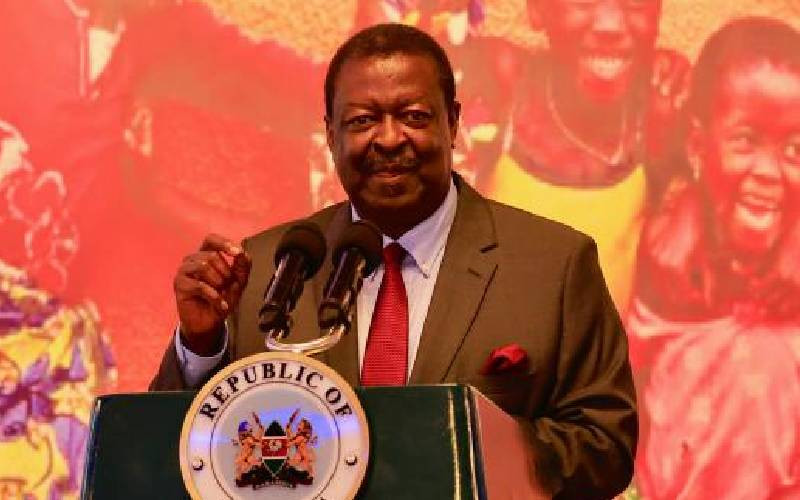The Kenya Police Service has continuously regained the title of the most corrupt institution in Kenya as well as reaching the top ten bribery-prone institutions within East Africa. The common form of police corruption is soliciting or accepting bribes in exchange of not reporting, referring charges or suppressing evidence in traffic, criminal or petty offenders
We have two classes of corrupt police officers that is the ‘meat eaters’, these are the characters that aggressively misuse their police powers for personal gains, and the ‘grass-eaters’ who simply accept the payoffs that the police work throw their way. ‘‘Meat eaters” always have target to meet in terms of the amount they need to make and mostly wear grim faces and are sometimes very irritant to deal with, while ‘grass-eaters’ are satisfied with whatever amount that comes their way many a times with a smiling face.
When caught on the wrong most Kenyans consider giving out bribes for fear of consequences of being charged in court and others do it for the inconvenience a court case would cause them.
The justification always given by those who condone this vise in defense of allegations of corruption, is that it takes two to tango and the whole mess should never be blamed wholly on the police service.
Considering that both the giver and the taker are always satisfied with their act, it leaves no room for reporting and the act is therefore veiled in secrecy. The only time that the acts come in to the open or revealed is during the opinion poll when assessing on level of corruption.
In today’s era of modern technology in almost every aspect of human interaction, electronic surveillance, as a surveillance tool, is the only available method that is powerful enough to penetrate the veil of secrecy surrounding criminal activities including corruption. The few successes realized by the anti-corruption body have been successful mainly because of the use of surveillance equipment.
In the wake of recent riots around USA resulting from the shooting of an innocent civilian by a policeman, President Obama administration has equipped some policemen with body- worn cameras.
In Kenya we have had use of surveillance cameras by the Ethics and Anti Corruption Commission for a one off sting operation to nab police officers on the wrong side of the law. Considering the small successes in such rare operations, we need to go the US way and equip our officers with body–worn cameras starting with officers working in areas with high cases of corruption.
There are various benefits associated with the usage of body-worn cameras by the police officers. To start with, the cameras should be issued by the supervisor who should also be responsible for fixing the pin and turning the same on. He or she account through the footage for all the work done by each and every officer. The benefit for body-worn cameras for the police officers is that such cameras would provide accurate record of where and when the camera was switched off.
The cameras will in a big way reinstate trust between the police and the public, in that the public will know that they are realistically expected not to bribe the police as both are being watched. These consequently, will lead to increased compliance with the laws and regulations. Transparency will be but a matter of routine.
The cameras will also lead to better evidence documentation and increased accountability and transparency. In the recent past we have seen a new trend where members of the public are issued with cash bond to appear in court but the same are secretly withdrawn after striking a deal with the ‘meat eaters’ to forfeit the cash bail. With cameras in place, there would be evidence documentation and increased accountability.
In court cases the video evidence captured by officers while on duty will provide the court with objective truth relating to an offence. These would lead to increased accountability and reliability of officer narratives before court. Cases of biased investigations will be minimized.
Body camera can change the image of the police service not so much by recording bad behavior, but the use of the same could measure accountability and counter or confirm any complaints against a particular officer. In order to create the feel of omnipresence where every officer is aware that he is being watched by the administration, data storage and management should be left entirely in the hands of the Oversight Police Authority.
The usage of body-worn cameras has been tested in US. The reality is that body worn cameras will in a big way improve our police service image and if well implemented drastically change policing in Kenya.
By Chege Macharia , Surveillance Practitioner
Stay informed. Subscribe to our newsletter
 The Standard Group Plc is a
multi-media organization with investments in media platforms spanning newspaper
print operations, television, radio broadcasting, digital and online services. The
Standard Group is recognized as a leading multi-media house in Kenya with a key
influence in matters of national and international interest.
The Standard Group Plc is a
multi-media organization with investments in media platforms spanning newspaper
print operations, television, radio broadcasting, digital and online services. The
Standard Group is recognized as a leading multi-media house in Kenya with a key
influence in matters of national and international interest.
 The Standard Group Plc is a
multi-media organization with investments in media platforms spanning newspaper
print operations, television, radio broadcasting, digital and online services. The
Standard Group is recognized as a leading multi-media house in Kenya with a key
influence in matters of national and international interest.
The Standard Group Plc is a
multi-media organization with investments in media platforms spanning newspaper
print operations, television, radio broadcasting, digital and online services. The
Standard Group is recognized as a leading multi-media house in Kenya with a key
influence in matters of national and international interest.









